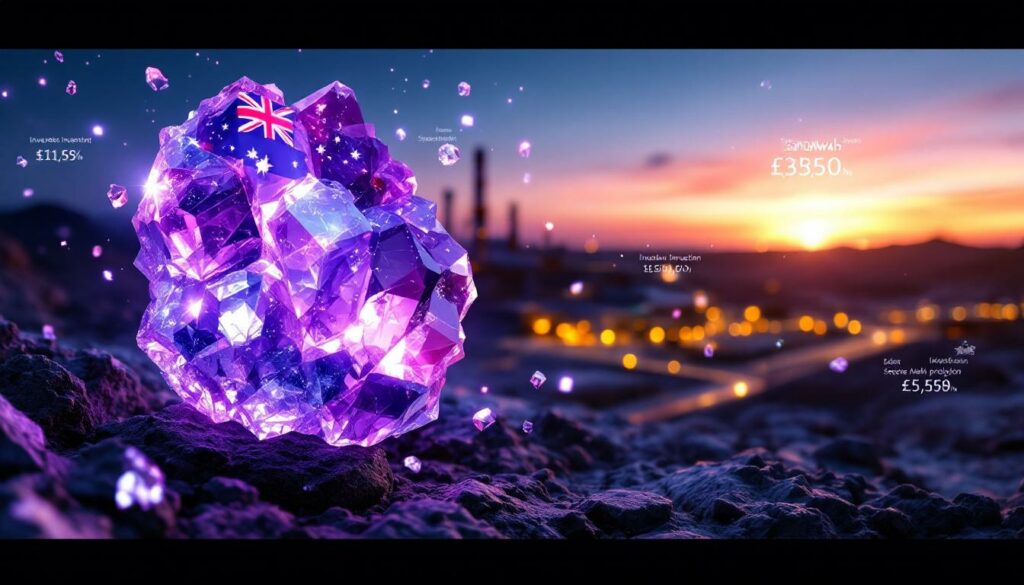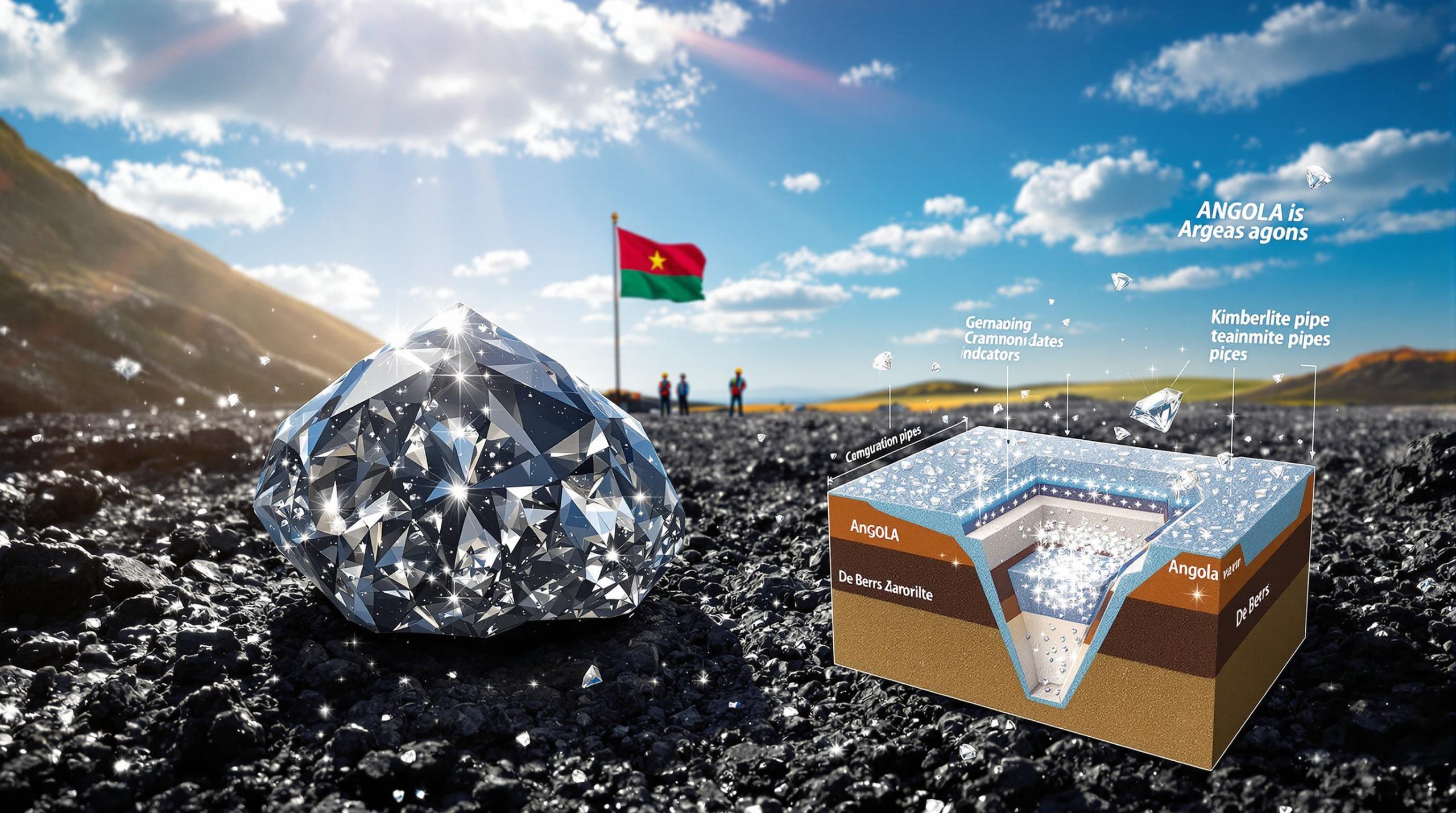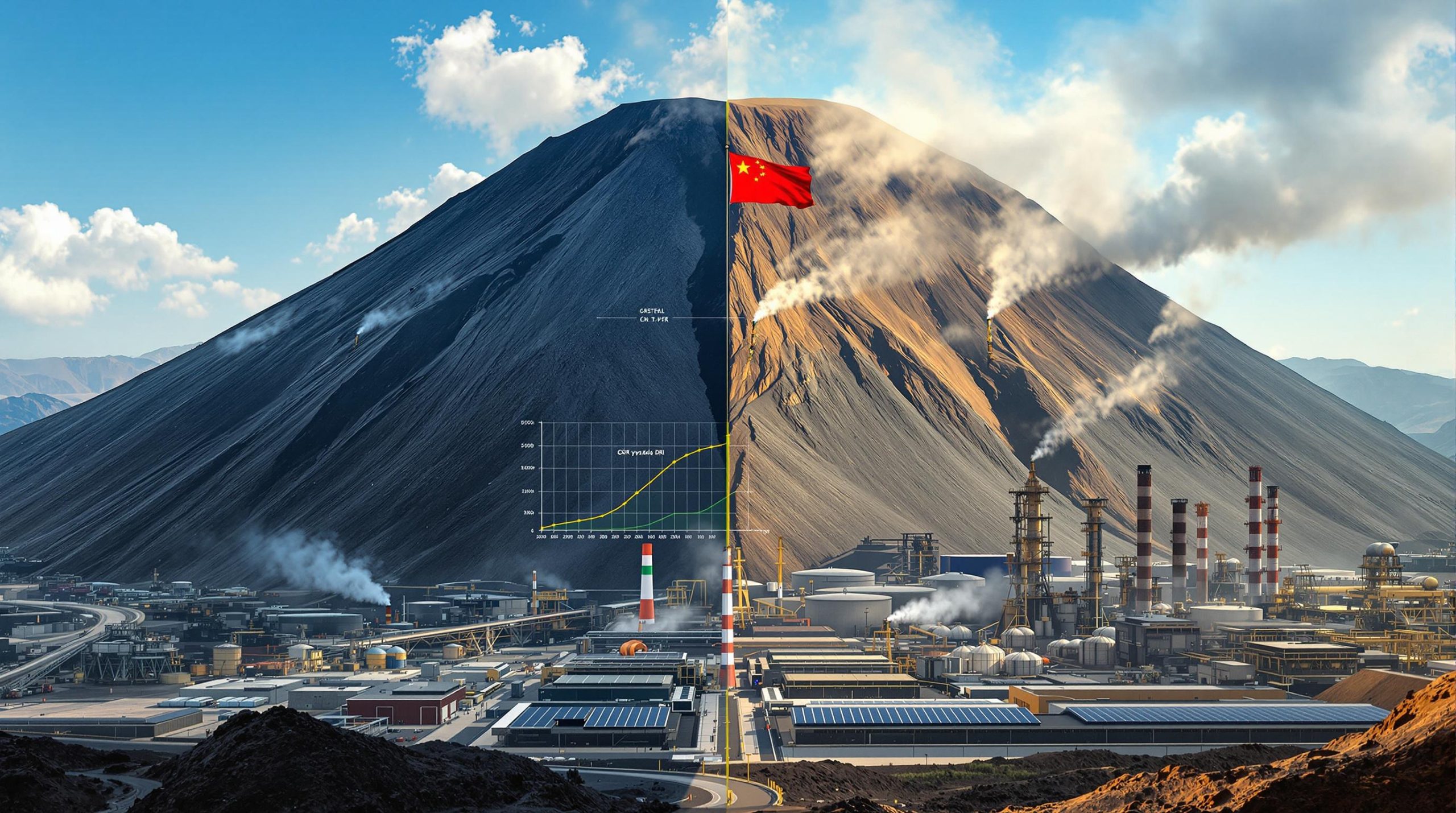Understanding the Strategic Fluorite Partnership
A landmark collaboration between Tivan and Japanese trading giant Sumitomo Corporation is reshaping Australia's position in the global fluorite market. This strategic partnership, formalized in July 2025, represents a significant milestone in the development of two key fluorite projects—Speewah and Sandover—with substantial backing from both corporate and government entities.
The partnership structure involves multiple layers of investment and cooperation. Japan Fluorite Corporation (JFC), a Sumitomo subsidiary, has invested $5.3 million for a 7.5% equity stake in the Speewah incorporated joint venture (IJV) after Tivan successfully satisfied all "tranche 1" conditions for the project. This initial investment demonstrates Sumitomo's confidence in Australia's fluorite potential.
What makes this partnership particularly significant is the involvement of JOGMEC (Japan Organization for Metals and Energy Security), which acquired a 49% equity stake in JFC. This government-backed participation elevates the partnership beyond a typical corporate venture.
"We are greatly honoured to have secured the involvement of JOGMEC in our joint venture. The pathway we have created to final investment decision is being funded by contributions from Tivan and Sumitomo Corporation, and the governments of Australia and Japan." — Grant Wilson, Tivan Executive Chairman
The dual-project development strategy allows the partners to target different market segments while creating operational synergies. Speewah focuses primarily on high-purity acid-grade fluorspar production, while Sandover aims to produce both metallurgical-grade (metspar) and acid-grade fluorspar, providing a diversified product portfolio.
This collaboration represents a concrete step in strengthening Australia-Japan bilateral relations, particularly in the critical minerals energy security sector, which both countries have identified as strategically important for economic security and industrial development.
What Makes the Speewah Fluorite Project Significant?
The Speewah fluorite project stands out as a cornerstone development in Australia's emerging fluorite industry. With the formal establishment of the incorporated joint venture between Tivan and Sumitomo's Japan Fluorite Corporation, the project has secured crucial early-stage funding and technical expertise.
JFC's $5.3 million investment for a 7.5% equity stake provides the capital needed to advance the project toward production. This funding is strategically allocated to support comprehensive feasibility studies focused specifically on the production of acid-grade fluorspar for export markets.
Acid-grade fluorspar, containing at least 97% calcium fluoride (CaF₂), commands premium pricing in global markets due to its essential role in manufacturing hydrofluoric acid—a critical component in numerous high-tech applications including:
- Lithium-ion batteries for electric vehicles and energy storage
- Aluminum production processes
- Semiconductor manufacturing for electronics
- Uranium enrichment for nuclear fuel
The project's focus on acid-grade fluorspar positions it to serve high-value industrial applications rather than lower-margin metallurgical uses. This strategic orientation aligns with global market trends showing stronger growth in chemical-grade fluorite demand driven by electrification and technology manufacturing.
Unlike many developing fluorite projects globally, Speewah benefits from Australia's stable regulatory environment, established export infrastructure, and proximity to key Asian markets—particularly Japan, South Korea, and Taiwan, which have limited domestic fluorite resources but substantial high-tech manufacturing sectors.
Geological Advantages
Speewah's geological characteristics contribute significantly to its commercial potential. Initial assessments indicate favorable fluorite mineralization with relatively low impurities, making it potentially suitable for acid-grade processing without excessive beneficiation costs.
The project's feasibility study will establish definitive resource estimates, processing requirements, and production costs, providing the foundation for final investment decisions by the joint venture partners.
How Does JOGMEC's Involvement Elevate the Partnership?
The entry of JOGMEC (Japan Organization for Metals and Energy Security) into the Tivan-Sumitomo partnership represents a significant vote of confidence in Australia's fluorite potential. By acquiring a 49% equity stake in Japan Fluorite Corporation, JOGMEC has effectively provided government-backed support to the venture.
JOGMEC is not a typical investor. As a Japanese government agency specifically tasked with securing stable supplies of critical resources, its participation signals official recognition of fluorite's strategic importance to Japan's industrial base. This involvement transforms what might otherwise be a standard commercial venture into a project of bilateral significance.
"JOGMEC's participation is seen as a landmark development, enhancing the bilateral relationship in critical minerals between Australia and Japan."
The agency's backing provides several distinct advantages:
- Reduced financial risk through government support mechanisms
- Enhanced project credibility for attracting additional investment
- Technical expertise from JOGMEC's extensive minerals development experience
- Diplomatic alignment between Australian and Japanese resource security objectives
- Potential access to preferential financing terms and risk guarantees
This partnership operates within the broader framework of the Australia-Japan Critical Minerals Partnership, which aims to strengthen critical minerals supply chain resilience for both nations. Japan, which has limited domestic mineral resources but extensive high-tech manufacturing, benefits from secure fluorite supplies, while Australia gains investment and market access for its emerging fluorite sector.
Historical Context and Significance
JOGMEC's involvement with Tivan follows a pattern of strategic Japanese investment in Australian critical minerals. Similar arrangements have been established for rare earths, lithium, and other materials deemed essential for Japan's industrial future. However, this particular fluorite partnership represents one of the first major JOGMEC-backed fluorite ventures in Australia, highlighting the mineral's growing importance in global supply chains.
The agency's involvement also signals Japan's broader strategy of reducing dependence on Chinese mineral supplies, which currently dominate global fluorite production with approximately 65% market share.
What's Next for the Sandover Fluorite Project?
While the Speewah project moves forward with formal joint venture arrangements, Tivan and Sumitomo have also laid groundwork for their second collaborative fluorite development—the Sandover project. This promising venture, initiated through a comprehensive Memorandum of Understanding (MoU), demonstrates the partners' long-term commitment to Australian fluorite development.
The Sandover MoU establishes a framework for:
- Co-development of the project from exploration through production
- Shared financing responsibilities and investment structures
- Operational management and technical collaboration
- Market access and product distribution strategies
- Environmental and community engagement approaches
Unlike Speewah's focus solely on acid-grade fluorspar, Sandover targets a dual-product strategy. The project aims to produce both metallurgical-grade fluorspar (metspar) containing 60-85% CaF₂ for steelmaking applications and high-purity acid-grade fluorspar (≥97% CaF₂) for chemical production.
"I am delighted to announce Tivan's second project collaboration with Sumitomo Corporation, reflecting the trusted relationship that we have established and the values that we share." — Grant Wilson, Tivan Executive Chairman
This diversified product approach allows the partnership to serve multiple market segments while balancing production economics. Metspar typically requires less intensive processing but commands lower market prices, while acid-grade material requires more sophisticated beneficiation but yields significantly higher returns.
Commercial Synergies
The development of both Speewah and Sandover creates substantial operational and commercial synergies. These include:
- Shared technical expertise and processing knowledge
- Combined marketing leverage with international customers
- Logistics optimization for product export
- Risk distribution across multiple resource bases
- Economies of scale in equipment procurement and operations
The Sandover project, acquired by Tivan in late 2024, represents an expansion of the company's fluorite portfolio and demonstrates its strategic positioning in the emerging Australian fluorite sector. As the project advances through technical studies and permitting processes, it will benefit from lessons learned at Speewah while maintaining its distinctive development pathway.
Why Is Fluorite Gaining Strategic Importance?
Fluorite (calcium fluoride, CaF₂), also known commercially as fluorspar, has emerged as a critical mineral in recent years, gaining formal recognition in strategic mineral classifications by Australia, the United States, the European Union, and Japan. This elevation reflects growing awareness of fluorite's irreplaceable role in multiple high-tech and industrial applications.
The global fluorite market, valued at approximately $2.1 billion in 2024, is projected to grow at a compound annual growth rate of 5.3% through 2030, driven by several interconnected factors:
Essential Industrial Applications
Fluorite serves as an irreplaceable input in numerous critical industries:
- Steel and aluminum production: Metallurgical-grade fluorite (metspar) serves as a flux in steelmaking, reducing melting points and removing impurities
- Lithium battery manufacturing: Acid-grade fluorite enables production of lithium hexafluorophosphate (LiPF₆), the primary electrolyte in lithium-ion batteries
- Semiconductor fabrication: Ultra-high purity fluorite derivatives are used for plasma etching silicon wafers
- Nuclear fuel processing: Fluorite is essential for producing uranium hexafluoride in the enrichment process
- Refrigeration and cooling: Fluorite-derived compounds are used in advanced refrigerants with lower environmental impact
Supply Chain Security Concerns
The strategic importance of fluorite is amplified by supply concentration issues:
- China currently produces approximately 65% of global fluorite supplies
- Recent export restrictions and quotas from China have tightened global availability
- Few countries have active fluorite mining operations of significant scale
- Processing capabilities for high-purity acid-grade fluorite are limited outside China
These factors have created vulnerability in supply chains for industries dependent on fluorite and its derivatives, prompting countries like Japan, South Korea, and EU nations to seek alternative, secure supply sources.
Australia's Emerging Position
Australia holds significant fluorite resources but has historically had minimal production. The country's stable regulatory environment, established mining expertise, and proximity to Asian markets position it favorably for fluorite sector development.
Projects like Speewah and Sandover represent Australia's opportunity to establish itself as a reliable, alternative supplier in global fluorite markets, particularly for high-value acid-grade material used in technological applications.
What Does This Mean for Australia's Critical Minerals Sector?
The Tivan-Sumitomo fluorite partnerships exemplify a broader trend of accelerating Japanese investment in Australia's critical minerals sector. Since 2020, Japanese investment in Australian critical minerals projects has increased by approximately 300%, reflecting both nations' strategic priorities in securing supply chains for industrial materials.
This trend has significant implications for Australia's mining industry and economic development:
Diversification Beyond Traditional Commodities
Australia's mining sector has historically been dominated by iron ore, coal, and base metals. The emergence of fluorite and other critical minerals represents an important diversification that:
- Reduces economic dependence on traditional bulk commodities
- Targets higher-value specialty minerals markets
- Aligns with global technological and industrial transitions
- Positions Australia in growth-oriented resource sectors
Government Support Mechanisms
The Tivan-Sumitomo partnerships benefit from supportive policy frameworks established by both Australian and Japanese governments:
- The Australian Critical Minerals Strategy (2023) identifies fluorite as a priority mineral
- Loan facilities through Export Finance Australia for critical minerals projects
- Expedited permitting processes for projects of strategic significance
- Matching development funding programs through Australian government agencies
- Technical cooperation agreements between Australian and Japanese geological surveys
These policy supports reduce development barriers and financial risks for early-stage projects in emerging mineral sectors like fluorite.
Development Timeline Expectations
Based on current progress, industry analysts project the following timeline for Australia's fluorite sector development:
- 2025-2026: Completion of feasibility studies for pioneering projects including Speewah
- 2026-2027: Final investment decisions and construction commencement
- 2028-2029: Initial production from Australia's first modern fluorite operations
- 2030 onwards: Potential expansion and additional project development
This timeline positions Australia to contribute meaningfully to global fluorite supplies within the current decade, coinciding with projected growth in demand for batteries, semiconductors, and other high-tech applications requiring fluorite derivatives.
Market Positioning Opportunities
The Tivan-Sumitomo partnerships illustrate how Australia can strategically position its critical minerals reserve:
- Focus on high-value segments: Targeting acid-grade fluorite rather than lower-value metspar
- Secure offtake through strategic partnerships: Leveraging relationships with end-users like Japan
- Emphasize supply chain security: Marketing Australian fluorite as a reliable alternative to concentrated Chinese supplies
- Integrate with downstream processing: Developing capacity for fluorochemical production within Australia
These approaches maximize economic returns while addressing the strategic concerns that drive investment in critical minerals.
FAQ: Japanese Investment in Australian Critical Minerals
Why is Japan investing in Australian fluorite projects?
Japan has limited domestic mineral resources but maintains a sophisticated manufacturing sector that requires reliable access to industrial minerals like fluorite. Australian fluorite represents a strategically secure supply alternative to current Chinese-dominated sources.
Japanese investment in Australian fluorite projects serves multiple objectives:
- Supply security: Ensuring reliable access to essential industrial inputs
- Risk diversification: Reducing dependence on concentrated supply sources
- Strategic alignment: Strengthening economic ties with Australia as a like-minded partner
- Industrial competitiveness: Maintaining Japan's position in high-tech manufacturing sectors
Through entities like JOGMEC and Sumitomo Corporation, Japan can secure priority access to Australian fluorite production while supporting project development through investment and technical expertise.
What is the difference between metspar and acid-grade fluorspar?
Fluorite products fall into two main commercial categories with distinct specifications and applications:
Metallurgical-grade fluorspar (metspar):
- Contains 60-85% calcium fluoride (CaF₂)
- Used primarily as a flux in steel and aluminum production
- Reduces melting temperatures and removes impurities in metallurgical processes
- Typically commands lower market prices ($250-400 per tonne)
- Has less stringent purity requirements for silica and other contaminants
Acid-grade fluorspar:
- Contains minimum 97% calcium fluoride (CaF₂)
- Primary feedstock for hydrofluoric acid production
- Essential for manufacturing lithium battery electrolytes, refrigerants, and fluoropolymers
- Commands premium pricing ($400-600+ per tonne)
- Requires sophisticated beneficiation processes to achieve high purity
The Speewah project focuses exclusively on acid-grade production, while the Sandover project aims to produce both grades, allowing the partnership to serve multiple market segments.
How does this partnership benefit Australia's mining sector?
The Tivan-Sumitomo partnerships generate multiple benefits for Australia's mining industry innovation:
- Capital inflow: Direct foreign investment into project development
- Technical knowledge transfer: Access to Japanese processing expertise and technology
- Market access: Established pathways to Japanese industrial consumers
- Sector diversification: Development of fluorite mining alongside traditional commodities
- Value-adding opportunities: Potential for downstream fluorochemical production
- Employment creation: New jobs in regional areas where projects are located
- Export revenue: Additional mineral export streams beyond traditional resource export challenges
These benefits extend beyond the specific projects to strengthen Australia's broader position in critical minerals markets and enhance its reputation as a reliable supplier of strategic resources.
What role do government agencies play in these joint ventures?
Government agencies from both Australia and Japan play crucial facilitative and supportive roles in these fluorite joint ventures:
JOGMEC (Japan):
- Provides equity investment through its 49% stake in Japan Fluorite Corporation
- Offers technical evaluation and project assessment expertise
- Potentially provides loan guarantees or other financial risk mitigation
- Coordinates with Japanese industrial consumers of fluorite products
- Aligns projects with Japan's resource security strategy
Australian Government:
- Provides regulatory framework through the Critical Minerals Strategy
- Offers potential funding through critical minerals initiatives
- Facilitates permitting and approvals for project development
- Supports export logistics and infrastructure development
- Coordinates bilateral cooperation through diplomatic channels
This government involvement underscores the strategic nature of fluorite development beyond purely commercial considerations, positioning these projects within broader national interest frameworks for both Australia and Japan.
Want to Get Ahead of Major ASX Mineral Discoveries?
Unlock immediate alerts on significant mineral discoveries like those discussed in this article with Discovery Alert's proprietary Discovery IQ model, giving you the edge to capitalise on potential market opportunities before they gain widespread attention. Explore historical returns from major discoveries and start your 30-day free trial today at Discovery Alert's discoveries page.




